I understand the principle behind charlieplexing, however I don't understand how the circuit below works. Say I wanted to illuminate LED5, wouldn't I set Pin1 to OUTPUT-LOW, Pin2 to INPUT, and Pin3 to OUTPUT-HIGH? Current will then flow through LED5. However, won't current also flow through LED4 and LED2?
